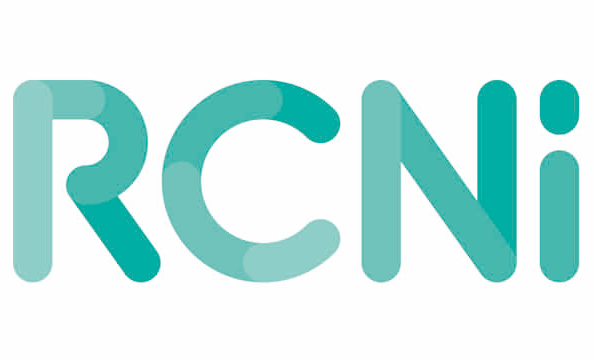Elizabeth Halcomb
How you can help other researchers to expand their thinking
Why not take the extra step of publishing work about your methodology or research methods
After the hard work of research, make sure your findings reach the people you need
Failing to properly disseminate your research could be a big mistake, explains Liz Halcomb
Conducting research into end of life care
What to consider when undertaking research with vulnerable participants
Collecting data in research
How careful planning can ensure fewer problems are encountered in data collection
Strategies for using non-participatory video research methods in general practice
Each stage stage needs consideration, particularly its preparation and when collecting data
A study exploring the protean responses of nurses transitioning to primary healthcare
Background Healthcare systems are faced with changing community health profiles and ageing populations. Together with economic considerations, these factors have influenced the increase in provision of care in primary rather than other healthcare settings. Many nurses are electing to move from acute care to meet demands for a skilled primary healthcare workforce. However, little is reported about these nurses’ experiences of transition. Aim To describe how role theory provides a theoretical framework to inform the design of a mixed-methods study exploring the transition of acute care nurses to roles in primary health care. Discussion The paper explores the relevance of role theory and its components as a validated framework for informing the design of the quantitative and qualitative components of the study. The methodology consisted of a national survey of recently transitioned nurses, with questions that explored experiences of nurses in relation to role exit, role entry, role enactment, role ambiguity, role stress, role strain and rites of passage. The qualitative component of the study incorporated semi-structured interviews with selected participants to further explore aspects of the transition. Conclusion There are few published reports on the value of theoretical frameworks in the design of nursing research. This paper describes one example of the value of selecting an appropriate theoretical framework for a national study of experiences of transition. Implications for practice Nurses transitioning between clinical settings experience a range of personal and professional challenges. Role theory provides a valuable framework which is applicable to qualitative and quantitative research into these experiences.
An exemplar of naturalistic inquiry in general practice research
Background Before beginning any research project, novice researchers must consider which methodological approach will best address their research questions. The paucity of literature describing a practical application of naturalistic inquiry adds to the difficulty they may experience. Aim To provide a practical example of how naturalistic inquiry was applied to a qualitative study exploring collaboration between registered nurses and general practitioners working in Australian general practice. Discussion Naturalistic inquiry is not without its critics and limitations. However, by applying the axioms and operational characteristics of naturalistic inquiry, the authors captured a detailed ‘snapshot’ of collaboration in general practice in the time and context that it occurred. Conclusion Using qualitative methods, naturalistic inquiry provides the scope to construct a comprehensive and contextual understanding of a phenomenon. No individual positivist paradigm could provide the level of detail achieved in a naturalistic inquiry. Implications for practice This paper presents a practical example of naturalistic inquiry for the novice researcher. It shows that naturalistic inquiry is appropriate when the researcher seeks a rich and contextual understanding of a phenomenon as it exists in its natural setting.
An examination of envy and jealousy in nursing academia
Aim To discuss envy and jealousy and how their positive and negative aspects among nurse academics affect the workplace. Background In nursing academia, jealousy and envy are common emotions, engendered by demands for high productivity, intense competition for limited resources, preferences for particular assignments and opportunities for promotions. When these feelings are moderate and part of everyday rivalry, competition and ambition benefit the organisation. However, jealousy and envy can have serious consequences including damaged relationships and communication, and the undermining of colleagues’ performance. Discussion Strategies are recommended to provide opportunities for self-reflection and consideration of how the workplace affects nursing academics’ wellbeing and professional performance. Conclusion Jealousy and envy can be damaging emotions in the workplace. The embittered, hostile person can undermine and damage relationships, disrupt teams and communication, and undermine organisational performance. Discussing the positive and negative effects of envy and jealousy provides an opportunity for nursing academics to self-reflect and to consider others and their own personal and professional performance. Implications for practice Understanding how jealousy and envy impact on the work environment, workplace relationships and individual/team performance is important especially for early career and seasoned nursing academics alike.
We must remain nurse-focused
The spectacular RCN international nursing research conference in Edinburgh last month saw more than 70 delegates from across the globe showcase their work. There were presentations on innovative research methods and methodology, many of which will be published in Nurse Researcher.
Measuring research success
Defining successful research can be complex. For novice researchers, success may involve completing research projects and publishing in peer-reviewed journals, but for experienced researchers more complex measures of success come into play. Each researcher’s reputation, future grant funding and career prospects depend on the success of each project, and the quality of the researcher’s track record.
Making space for reflection
Clinicians and researchers often say they do not have time to reflect. Although we are all busy, taking the time to stop and consider where you are and where you want to be can act as a powerful tool in planning your career.
Reviewers needed: apply here
Peer review is an essential task in the professional publishing process. Reviewers provide a vital service to journals and their expert reviews guide the editor when making decisions about what will and will not be published.
Systematic reviews
Despite the increasing popularity of systematic reviews, there remains a need to ensure that they are conducted rigorously and provide an objective critical summary of research findings. The strength of a systematic review is its rigorous methodological approach to interrogating a body of literature. Both authors and readers should be familiar with the methodology used to conduct and evaluate systematic reviews. By way of introduction, this article explains and explores the steps that make up the systematic review process.
Mixed methods research
Mixed methods research involves the use of qualitative and quantitative data in a single research project. It represents an alternative methodological approach, combining qualitative and quantitative research approaches, which enables nurse researchers to explore complex phenomena in detail. This article provides a practical overview of mixed methods research and its application in nursing, to guide the novice researcher considering a mixed methods research project.
The challenges of being an insider in storytelling research
Aim To describe the challenges related to being an ‘insider’ researcher in a study that uses a feminist-informed storytelling research design and to discuss practical strategies to manage these challenges. Background The positioning of the researcher in qualitative research has numerous methodological implications. Often, qualitative researchers share similar experiences or characteristics with their participants. Such an ‘insider’ position provides challenges for the researcher in conducting the research. Understanding these challenges and planning how to manage them is beneficial for the researcher and for the conduct of the project. Data sources This paper is based on the research team’s experience of undertaking a feminist-informed storytelling study exploring the experiences of Australian women providing long-term foster care. Review methods This paper provides a discussion of the methodology used in the investigation. Discussion Four challenges resulting from the insider status of the primary researcher were identified as affecting the research: assumed understanding, ensuring analytic objectivity, dealing with emotions and participants’ expectations. Strategies to address these challenges include: ‘participant probing’, ‘researcher reflexivity’, review by an ‘outsider’ researcher, identifying the risk, debriefing, making the aims and use of study outcomes clear, and acknowledging participants’ expectations. Methods to implement these strategies are described. Conclusion The use of an insider researcher was beneficial to our study design and helped with recruitment and rapport, enabling collaboration and the generation of stories rich in content. By identifying the challenges associated with insider research and using strategies to mitigate them, researchers can effectively use an insider position in conjunction with a storytelling research design. Implications for future research/practice Further investigation of the insider in different qualitative research designs would be useful in identifying challenges and benefits specific to those designs.
Exchange and equality during data collection: relationships through story sharing with lesbian mothers
Aim To explore how reciprocity is achieved through a method of self-disclosure, namely story sharing. Background Self-disclosure through story sharing promotes trusting relationships between researchers and participants that support the collection of high quality data, particularly when participants are members of a marginalised group and may feel especially vulnerable when sharing sensitive information. Data sources A qualitative study that examined the experiences of lesbian mothers. Review methods Strategies were carefully and deliberately implemented to engage in story sharing with the participants. Discussion Participants said that it made a positive difference to how safe and comfortable they felt once they knew at least some of the researcher’s story. Conclusion The collection of rich data is improved by using story sharing as a means of establishing reciprocity in qualitative research. Implications for practice/research Story sharing has the potential to improve the quality of the data collected in qualitative studies. However, strategies that promote the emotional safety of the researcher in this context will need further exploration.
Doing a Literature Review in Health and Social Care A Practical Guide Second edition
LITERATURE REVIEWS are an important preliminary step towards a research project or dissertation, as well as being an important source of information in their own right. But despite their value, literature reviews often present a major challenge to students at undergraduate and postgraduate level.
Using the consensus development conference method in healthcare research
Consensus methods have been used in health research for many years, although it has only been since the 1950s that formal consensus methods have been adopted in research and policy decisions (Fink et al 1984, Black et al 1999). As health professionals strive to formulate a range of evidence-based guidelines, there is an increasing trend to use this method. The consensus conference method has two advantages; first, it allows synthesis of the best available information; and second, it allows a process of consensus and validation between key stakeholders, who will often be end-users of the document, thereby increasing their ownership and engagement. Particularly in nursing, discipline-based groups are using this method to integrate evidence in pragmatic considerations of systems issues, professional values and consumer needs.











